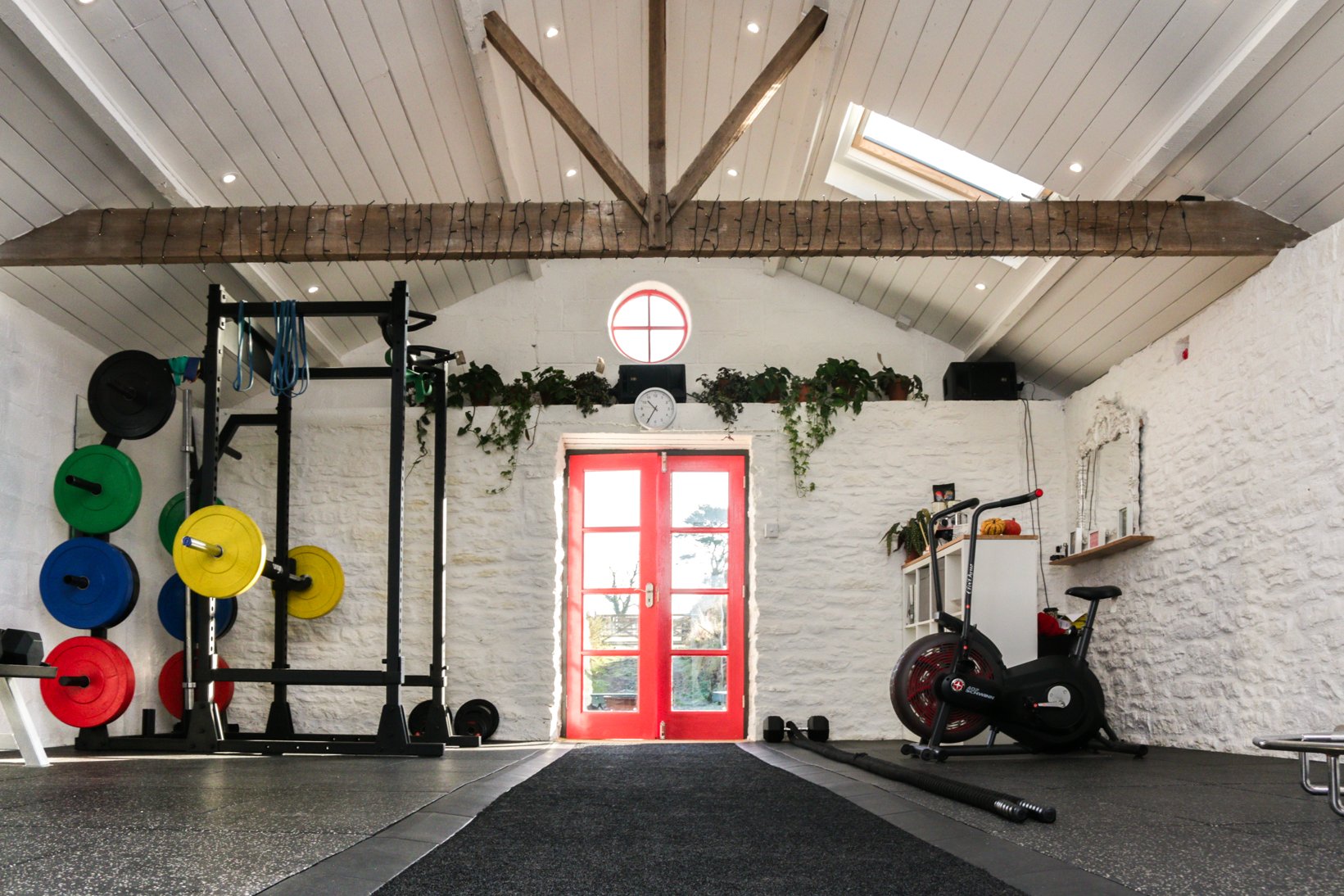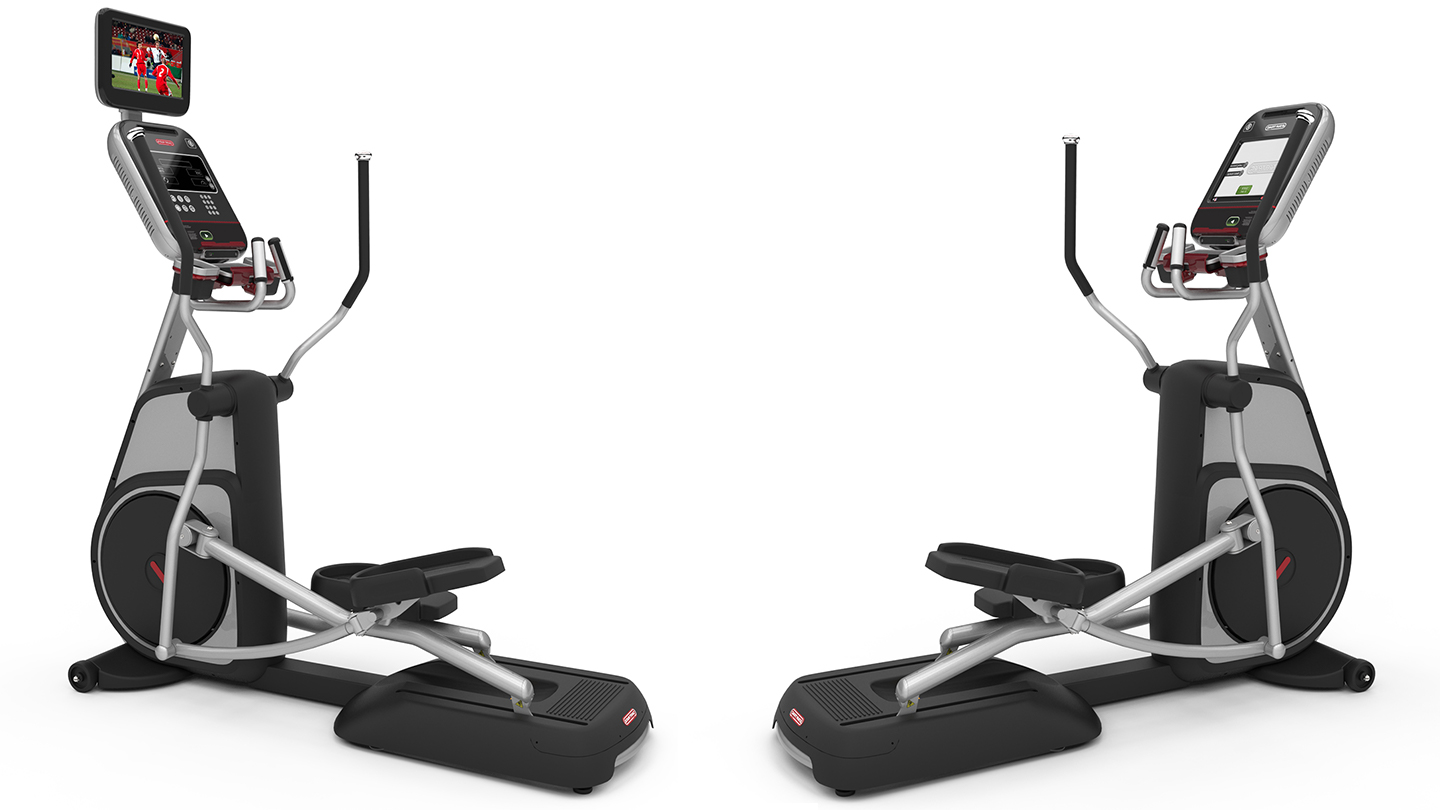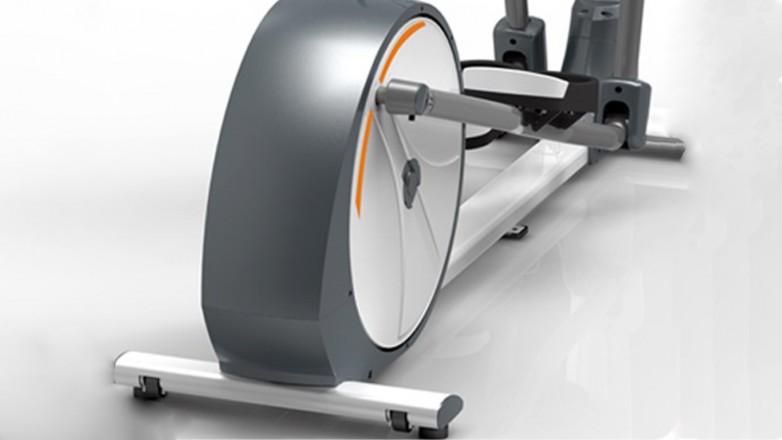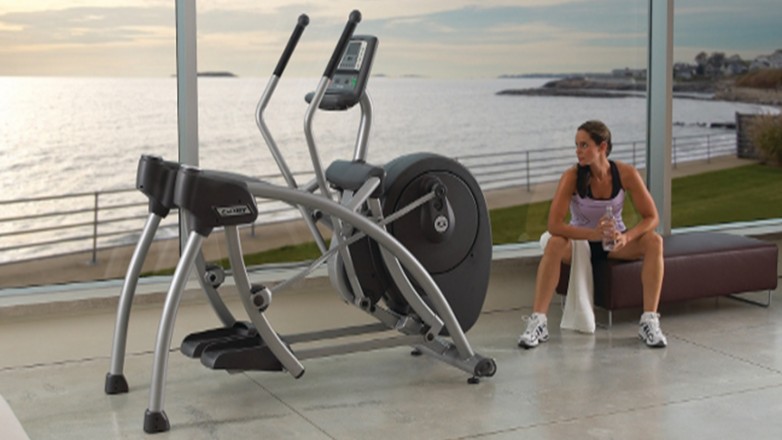Product added to cart


By catering to all fitness levels, the cross trainer is the perfect machine to introduce a new gym-goer to cardio, as well as improving the cardiovascular capacity and even strength of an advanced athlete. To help cut through the industry jargon, and guide you towards the right machine for you and your facility, we have set up this buying guide.
Unlike treadmills, cross trainers have a set stride length which varies from machine to machine. Most commercial elliptical trainers offer a stride length between 16" - 21" which results in a smooth and natural running motion during exercise.
Machines with shorter stride lengths will mimic a movement closer to walking, and can sometimes judder during usage. Performing quick movements at this limited stride does not allow for the same wide elliptical movement, causing imbalance.
There are some cross trainers that offer adjustable stride lengths, allowing every user to customise the machine to the level at which they are comfortable exercising.
Machines like the Cybex Arc Trainer have developed a differently shaped stride to place emphasis on lower body strength, allowing your legs to move in an arc shape rather than an elliptical one. You can watch this video to see the difference between the two.
Some cross trainers offer foot pads that move with the foot to support the leg's motion through the entire movement, but most manufacturers still offer the standard fixed foot pads, as the benefits of adjusted foot support does not always justify the costs.

You can adjust the intensity of your workout through speed, resistance and incline. There are two main systems that will control the resistance of most cross trainers; belt or magnetic resistance. It is expected that any cross trainer found in a commercial setting uses the magnetic resistance set-up while home use cross trainers use belt drive systems.
Magnetic resistance means that the cross trainer has an electromagnet built in which, at the push of a button, changes the amount magnetic resistance is applied to the flywheel. This creates a heavier or lighter workout for the user. The belt drive achieves the same effect, but runs a higher risk of wearing down and is much less consistent in its breaking power.
Magnetic resistance systems often offer a greater variation in resistance programmes, allowing the user to fine tune their training if they wish to do so.
Recently, a new type of cross trainer has emerged, which uses a fan instead of a flywheel. This makes use of natural air resistance instead of a mechanical resistance system, and is popular on the HIIT cardio market. Ellipticals such as the Cybex Sparc have fewer resistance settings, as these are built for short, intense bursts of exercise, rather than long-term precision training.
A secondary exercise denominator is the incline level. Not all cross trainers offer incline adjustment options, but the ones that do allow the user to target their core and thigh muscles during the workout. It's good to know that in some machines, an increased incline needs to be set up before the workout begins and can affect the stride length of the machine.
Incline can be adjusted both manually or through a motorised elevation system, depending on the cross trainer. Motorised elevation systems are great fun and can really bring an edge to your equipment offering, but are costly to repair outside of their warranty period (more on warranty later)
The console or display of any machine is often the part of the equipment the user pays most attention to. It is therefore beneficial to know exactly what your members are expecting from you and base your purchase around this.
As technology advances, more immersive (and impressive looking) LCD and touch displays have become popular in the fitness industry. These allow the user to keep an eye on their workout while simultaneously watching TV, running along a pre-recorded track, or controlling their music. Some machines even offer pre-installed virtual coaches that will make the user feel like they have a PT guiding them at all time.
Comparing these to LED displays, which tend to use a dot matrix to show time, resistance, speed, HR and more, it is purely down to user preference and budget available. Often, embedded LCD displays will still offer a more simplified version of the workout to mimic the old fashioned LED to some extent.
Many cardio machines now allow users to monitor their workout, not just through HR, resistance or speed, but through Watt generation as well. Though this number can seem arbitrary to a regular gym goer, an experienced athlete (or a member with the correct guidance) will quickly realise the potential of monitoring performance through their Watt output.
An embedded HR sensor in the console can allow the user to keep a close eye on their performance throughout the workout. With the increased popularity of smart watches and fitness/step monitors, it seems that consumers are constantly eager to know how their heart is performing.
If you are looking to have an integrated HR system in your cross trainer, make sure you know what HR monitors these are compatible with. Most machines will synchronise with chest straps with ANT+ or Bluetooth sensors, but each machine is different.
Many cross trainers carry built-in HR monitors on the handles and on the stationary handlebars in front of the monitor. These will give a good general idea of the HR levels the customer is performing at, but remember that the motions of the workout, the sweatiness of hands and cleanliness of the electropads can all affect the accuracy of the HR reading.
Most commercial cross trainers will come with pre-set programmes to easily allow your members to target the fitness aspect they wish to improve. These include cardio vascular performance, fat burning, strength building and more. Obviously having more programmes sounds great, but make sure you keep an eye on both the programmes as well as the resistance levels available, as it is the combination of the two that will truly allow your members to precisely control the workout.

If you are placing your new cross trainer in a busy facility, you should look for a machine that will be able to survive intense, continuous use. Look for a machine that has a sturdy build, with a base footprint of around 140cm by 75cm for stability. Keep an eye on the maximum user weight as well, as many cross trainers keep theirs below 20 stone. If you are looking for a machine built to withstand more, you may be looking at a model that uses stronger steel and has special welding and bearings.
Check out the flywheel on the machine you are interested in- the minimum standard weight in kilo's is 5kg - 6kg. The heavier your flywheel, the smoother the strides will be. Keep in mind that a heavier flywheel also means greater transport costs, but paying a little bit extra to get the steadier, stronger machine may save you larger maintenance fees in the long run.
If your cross trainer rattles or seems unsteady when you first test it out of the box, make sure it is positioned completely level (some cross trainers have adjustable leveling feet to allow you to fine-tune this aspect). If it still does not feel right, make sure to contact your supplier because training on a cross trainer (or any machine) that moves excessively can cause costly damages.
Speaking of maintenance fees- check out the warranty that comes with the cross trainer. This often comes with lifetime frame and limited parts and labour cover. How limited varies from manufacturer to manufacturer, but you should be looking for one to two years on mechanical parts, and 90 days to six months on any wearable or cosmetic parts.
Your supplier may be able to offer you an extended warranty contract with your preventative maintenance contract which is worth investing in if you are running a high usage gym.